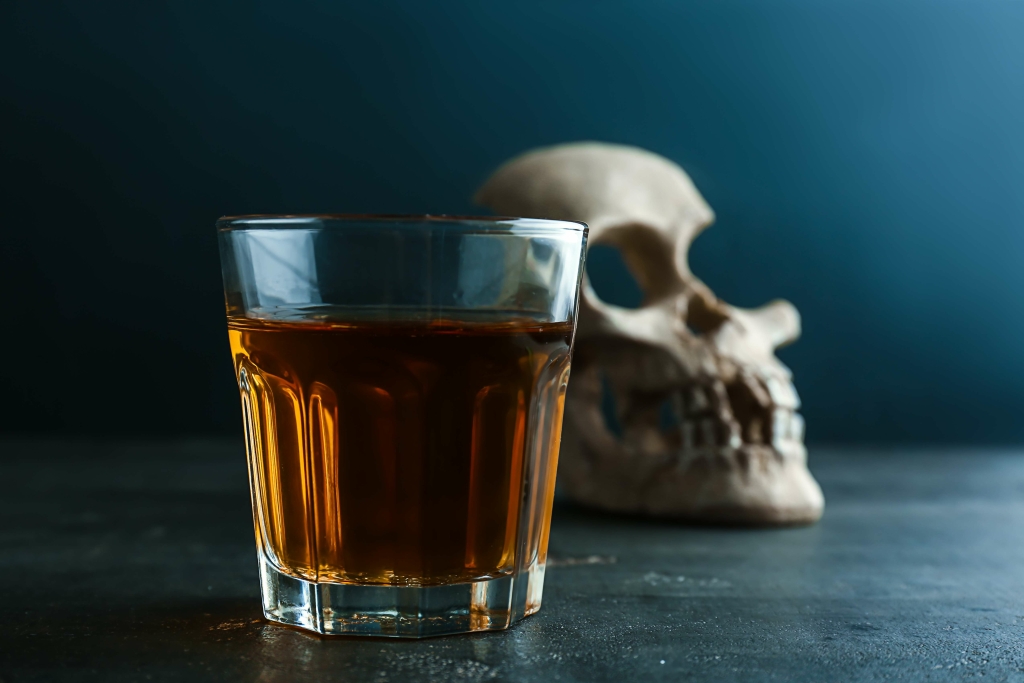Psychedelic-assisted psychotherapy promises a brightened outlook for an array of psychiatric afflictions and drug treatment delivered with compassion. But starting the 1990s, at first quietly, then openly, medical interest in psychedelics has been resurgent. Renewed interest in the healing properties of such agents has led to the so-called “psychedelic renaissance,” in which many such substances are being studied for a wide range of conditions. A number of psychedelics are now under active clinical investigation for the treatment of disorders including PTSD, treatment-resistant depression, anorexia nervosa, cocaine and opioid addiction, obsessive-compulsive disorder, Alzheimer’s and other dementias, end-of-life terrors, and even stroke recovery.

Autoimmune Neurological Disorders Symptoms: A Complete Guide
Another area for future enquiry is to examine the role of individual differences in suggestibility as well as drug-induced enhancements of suggestibility in moderating and mediating behavioural change (Carhart-Harris et al., 2015; Carhart-Harris and Friston, 2019). Psychedelic1 compounds such as LSD (lysergic acid diethylamide), psilocybin (present in ‘magic mushrooms’) and DMT (dimethyltryptamine, present in ayahuasca2 and other preparations) may not seem like obvious tools for promoting healthier living. However, plants and fungi with psychedelic potential have been used by humans for centuries, if not millennia, for holistic ‘healing’ of body and mind (Akers et al., 2011; Lowy, 1971; Schultes, 1969). In the mid-20th century, aided by the laboratory synthesis of mescaline, LSD and psilocybin, scientists began to systematically test the effects of these compounds, with hundreds of studies performed. Several of these focused on the ability of psychedelics to promote traditional psychotherapy—with positive results claimed in the treatment of mood disorders and addictions, in particular. For example, a systematic review of 21 studies published between 1949 and 1973 covering the use of LSD and psilocybin for treating depression reported that 79% of participants had clinician-judged improvement after treatment (Rucker et al., 2016).
Rise of the Psychonaut: The Book That Redefines Psychedelics as Technology, Not Therapy
At best, says Griffiths, we can say that psychedelic therapies seem to change consciousness in some unique way. But even that’s on shaky ground because, notwithstanding the huge advances in brain science and technology, scientists still can’t really explain the basic nature of consciousness. In some ways, to understand how psychedelics work, you first need to understand how they don’t work. Neuroscientist Gul Dolen, MD, PhD, has a theory that she says bridges the psychological and physical effects of psychedelic-assisted therapies. That’s certainly the view of some scientists who think psychedelics simply change the physical brain.
How many people use hallucinogens*?
To a considerable degree, the therapeutic what is alcoholism value of the psychedelic experience hinges on the quality of the patient-therapist relationship. Therapists, who must receive special training and certification in the use of psychedelics, prepare patients for the experience by establishing a completely safe and trusting environment. They provide a reassuring presence even before the drug is administered, during the time it is active, and after the effects have worn off. All current legal administration of psychedelic drugs is conducted under the direct supervision of specially certified therapists. Importantly, researchers contend that it is the psychotherapy that transforms MDMA, psilocybin, and other hallucinogens from a novelty into a medicine. Psychedelics, if approved by the FDA, would be part of treatment for serious mental health issues and require extensive supervision and therapeutic support.
Brain Connectivity Changes
Some of what we learn creates automated behaviors and thoughts that are healthy for us, and well, some of what we learn doesn’t. Big, obvious traumatic experiences do impact us, but the daily things that weren’t great are often equally, if not more, impactful. For example, having a parent who regularly criticizes you about your appearance or behavior, or is emotionally immature, can create just as harmful programming as being in a severe car accident or witnessing an extremely violent act. Things that we repeatedly experience become automated; things like tying our shoes or driving a car are obvious examples of this. We don’t need to think at all about what our hands are doing with our shoelaces or how to put our car in reverse to back out of a parking spot. We don’t want to spend the same amount of energy tying our shoes everyday as we did when we were six years old.

Psychedelic Drugs Flatten the Brain’s Dynamic Landscape
- While some people may experience something called an “ego death” where they feel they are a part of something larger, for a lot of people it acts like a hard reboot on their computer.
- Scientists already know psychedelics typically stimulate the brain’s serotonin system.
- Instead, these substances affect other neurotransmitter systems, including dopamine and glutamate.
- Research also suggests benefits for substance use disorders, including alcohol and nicotine addiction, as these compounds may disrupt problematic thought patterns.
This designation expedites drug development and review for serious conditions where preliminary evidence suggests substantial improvement over existing therapies. Ongoing clinical trials, including numerous Phase 3 studies, evaluate the safety and efficacy of these treatments. While some approval applications, are psychedelics addictive such as MDMA for PTSD, have faced initial rejections due to insufficient evidence, research continues to progress. Widespread availability depends on successful trial completion and subsequent regulatory approvals.
Spontaneous health behaviour changes with psychedelics
“Patients talk about how they had an epiphany, how the trip enabled them to see how they’d built their lives around a foundational myth that wasn’t true, whether about their relationship to other people, their personality, their deserving to be in the world,” Dölen says. The post-trip therapy, in turn, allowed them to identify how that myth led to maladaptive ways of interacting with the world, and understand how to integrate that knowledge into their daily lives. In a second phase looking at relapse, the animal models are weaned off of the opioid for a period of time. When cues are reinitiated, the weaned rodents immediately begin pushing the lever again, which serves as a readout for relapse.
Watch: How Psychedelics Change the Brain

Evidence has accumulated in recent years highlighting a relationship between a particular brain system and so-called ‘ego functions’ such as self-reflection (Carhart-Harris & Friston, 2010). This network is referred to as the ‘default mode network’ because it has a high level of ongoing activity that is only suspended or interrupted when one’s attention is taken up by something specific in the immediate environment, such as a cognitive task (Raichle et al., 2001). But a reduction in FC between the default mode network and part of the hippocampus lasted for at least three weeks. This may reflect lasting changes in hippocampus circuits involved with the perception of self.
Meanwhile, ketamine is an example of a dissociative anesthetic, which acts by distancing users from reality. Such drugs can place patients in a dream-like state of sensory deprivation where even your sense of self fades away. MDMA is an example of an entactogen, a batch of compounds that alter social perceptions and amplify empathy. Take one of these drugs, and you’ll start feeling more connected to those around you, whether it be your fellow partygoers, your therapist, or even your significant other, as some therapists have found in helping bridge fractured relationships. You might hear the telltale ding, and your claustrum would coordinate each step you take next. Then your claustrum-as-switchboard would recruit your prefrontal cortex to decide whether to send a response.
The knowledge that psychedelics could impact immunity has existed since the early 1970’s, but the specifics are only recently being elucidated. Along with the effects on neuroplasticity, psychedelic-induced alterations in the immune system provide a potential mechanism linking their use with enduring changes https://dj-advisor.com/fun-ways-to-celebrate-your-sobriety-anniversary/ in brain function. This stems from the growing knowledge that the brain is dramatically influenced by moment-to-moment and chronic changes in immunity, with implications for cognition, mental state, and behavior.
- It takes inspiration from the hierarchical predictive processing model of global brain function, which states that the brain strives to model its world in order to minimize surprising exchanges with it and thus, promote its mastery.
- In the study, functional magnetic resonance imaging (fMRI) was used to study the effects of psilocybin on 30 people who had previous experience using hallucinogens.
- The team modeled how the drug-enhanced activity of these receptors would change the normal energy barriers to state transitions in the brain and found a barrier-lowering shift much like that observed between the placebo and psychedelic groups in the fMRI analysis.
- But there has been a big void in terms of understanding what they do to the brain itself, at the neural circuit level,” Kwan said.
What Psychedelics Can Teach Us About Human Connection
“Right now, a huge focus from the pharmaceutical companies is on developing drugs that may be able to take out the trip but still give you the benefit for treating mental illnesses,” Kwan said. “There’s an unacknowledged market for psychedelics outside of both the medical and the religious framework that are being widely discussed within the movement where most of the action is actually happening,” he said. When Colorado voters approved Prop 122, which legalized medicinal psilocybin, they also changed the law to decriminalize five substances – psilocybin, psilocin, DMT, ibogaine, and mescaline – meaning it is no longer illegal to possess, use, grow or share a personal amount. The state legislature clarified “personal amount” as a 12-foot by 12-foot grow area on private property.
After all, indigenous cultures have been using these substances for thousands of years without the ability to dissect and analyze the brain. They ‘close’ when the drug reaches the brain and end up “freezing” LSD to each serotonin receptor for several days. This is why the trip can last so long; eight hours on average but sometimes over 16 hours. So the main idea here is that psychedelics increase neuroplasticity, which allows for new connections in the brain, which ultimately can lead people to think and feel differently. These substances work on our serotonin receptors and on set what we’ve introduced as this mind manifesting or soul revealing quality.





